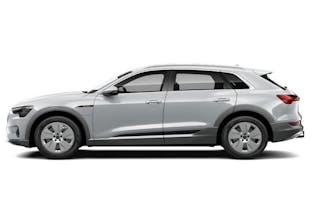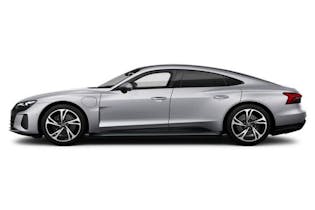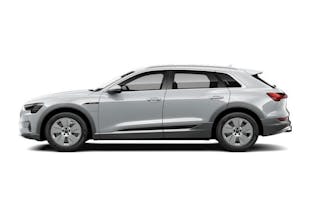Child car seats buying guide
Find out what to look for when buying a car seat.
Child car seats sold here must meet one of 3 standards. But some significantly exceed the minimum requirements of these standards and provide better protection for your child. Find out what to look for when buying a car seat.
What type of restraint?
When choosing a restraint, consider your child's weight, height and stage of development.
Your child is safest in a suitable-sized car seat until he or she reaches the upper weight or height limit for that seat. Resist the temptation to move up into the next size until absolutely necessary. NB: From birth until they're about one year of age babies need to lie facing the rear and at a 45° angle. This provides the best protection for the baby's fragile spine and neck in a crash.
Suitable for babies

Capsules
A capsule is small and convenient and it comes with a carrying handle – so it suits children from birth to about 10-13kg. Some capsules clip on to stroller wheels or come with a detachable base that remains secured in the car. Many capsules are safe to use up to 13kg, delaying the need to move to a forward-facing seat. Capsules should whenever possible be placed in the back seat.
Recommendation: Both Plunket and the American Academy of Paediatrics recommend that children travel in a rear-facing car seat for as long as possible – at least until they’ve outgrown their seat and preferably until they’re 2 years old (about 13kg). We recommend keeping your child rear-facing for as long as the seat allows.
Convertible seats
A “convertible” rear/forward-facing seat with integral harness is another option. It suits children from birth to 18kg and can be placed rear-facing for a baby or forward-facing for a toddler – which means you get more use from it. And many of these seats let your child stay rear-facing for longer than it could in a capsule, because the seat is physically bigger than most capsules.
But seats need more room than a capsule. They can also be inconvenient with a new-born baby – for instance, you can’t easily put the seat in a shopping trolley at the supermarket as you can with a capsule.
Tip: Your child has outgrown its rear-facing car seat when they're over the recommended weight for that seat, or when their head is at the top of the seat.
Suitable for toddlers
Forward-facing seats
A forward-facing seat is for when the child has outgrown the rear-facing seat, but is still too small to use an adult seat belt.

It suits children from 9 to 18kg (up to about 5 years old). Like a rear-facing seat, the forward-facing seat uses an integral harness to restrain the child – make sure this can be adjusted (for height) as the child grows. The seat should also be able to be reclined so the child can sleep comfortably and safely on longer journeys.
Forward-facing/booster seats
A “convertible” forward-facing/booster seat is another option for toddlers. It suits children from 9 to 26kg. You convert it from a forward-facing seat to a booster by removing the integral harness and using the seat with an adult safety belt.
Tip: Your child has outgrown a forward-facing seat when the weightlimit is reached or the top slots for the harness are below the child's shoulders or the child's eyes reach the top of the seat.
Older children

Booster seats
A booster seat suits children from 15 to 36 kg (up to about 11 years). It raises the child so that the car's diagonal safety belt fits properly across their shoulder. The booster seat also has guides that position the lap belt correctly as well as side wings to protect the child’s head from a side impact. Some booster seats use an “anti-submarining” strap: this hooks on to the lap belt to stop the child sliding forwards and underneath the safety belt during a crash.
Tip: Never use a backless booster seat. It can rotate in a side-impact crash and it offers no protection to the child’s head or torso. The Australia/New Zealand standard no longer certifies backless booster seats. Some booster seats can be converted to backless boosters for older children – don’t do this.
What to look for
Here's what to look for when choosing a child restraint.
-
Standard compliance label
There are 3 standards to look for. See "Car seat standards".
-
Locking clip
This holds the adult safety belt tight when it’s used to install the seat or secure the child into a booster seat. A locking clip is a good idea, even though it's not required by the standards. Some restraints don’t need one – so check the instructions.
-
Tether strap
This stops the child restraint tipping forward in a crash. The tether strap must be used for all restraints (rear- and forward-facing) that comply with the Australian/New Zealand standard – otherwise their safety performance will be compromised. Many forward-facing US restraints also use a tether strap, and the latest Isofix standard includes a tether strap. A tether strap doesn't necessarily make a seat safer than a seat designed without a tether, but if the seat has one it must be used - not using it will risk serious injury to the child, or worse. -
Side wings
Well-padded side wings can help protect the child in a side-on crash. Many wings are height-adjustable so they can “grow” with the child.
-
Reclining the seat
Many forward-facing and booster seats can be reclined to create either a better fit to the car seat, or to allow your child to sleep more comfortably and safely without slumping forward. Some seats require the recline angle to be chosen before the seat is installed, which will be inconvenient if you need to adjust the angle often. Some seats allow the angle to be adjusted after installation, using a lever or button. -
Height-adjustable seatback
A seat may claim to be suitable for children up to a certain weight but a tall child can grow out of a seat before then. Some forward-facing seats and booster seats have adjustable seatbacks that can be raised as the child grows.
-
Isofix and LATCH
Many late-model cars designed for sale in Europe are fitted with Isofix mounting points. An Isofix-compatible car seat can be snapped into the rear-passenger-seat frame instead of being held by the car's safety belt – so Isofix reduces the likelihood of a seat being installed incorrectly. The US has a similar system called LATCH (Lower Anchors and Tethers for Children). Isofix and LATCH seats will fit each other's mounting points.
-
Lining
Make sure the lining is easy to remove and washable. To protect your car's seat coverings look for a restraint with a mat underneath. Or you can keep a towel in the car instead.
Car seat safety tips
Before buying or hiring a child car seat, consider these points.
-
Buy or hire your restraint several weeks before you'll need it. This will give you time to get used to installing it.
- Always try the restraint in the car before you buy. Not all restraints fit all vehicles: some won't fit when they're in the rear-facing position, and sometimes the safety belt won't be long enough to secure the restraint. If your family has 2 cars, try the restraint in both.
- Never place rear-facing restraints (including capsules) in the front passenger seat if the car has an airbag that can’t be disabled. In a crash, the airbag will throw the restraint up against the passenger seat and the baby could be seriously injured or killed. Research shows that children are safest in the rear of the vehicle.
- A restraint that’s incorrectly installed or fitted will put a child at risk of serious injury or death. If you’re installing the restraint yourself, always follow the manufacturer's instructions. Retailers may have staff who are child restraint technicians, or you can find your nearest technician here. Technicians have had training and can advise you on your choice of restraint and show you how to install it properly.
Car seat standards
Car seats in New Zealand must meet one of 3 standards.
All children under 7 years of age must be in an approved child car seat when they're travelling in a car or van. The law also says you should correctly secure your child in an approved child restraint if one is available from their 7th until their 8th birthday.
The seat must be certified to one of 3 standards and suitable for the age, weight, height and physical development of the child.
The 3 standards:

- Australian/New Zealand standard AS/NZS1754: This can be identified by the Australian "tick" mark.
- US standard FMVSS213: Restraints that comply with this standard must show the number FMVSS213. They carry the "S" mark to show they have been certified for use in New Zealand.
- European standard ECE R44.04: This is labelled with a circle containing an "E" (the number in the circle varies depending on the European country where the seat's manufactured).
Our advice
Several things are very important when you're buying a car seat:
- It must be the right size – for your car as well as your child.
- It must meet a recognised safety standard (see "Car seat standards").
- The frame, straps, clips and padding must be in good working order.
- The restraint must be installed correctly in the car.
- Your child must be secured properly in the seat.
- Keep older children (primary school age) in a booster seat until they are tall enough to fit a safety belt, positioned correctly.
Don't buy second-hand
A second-hand restraint may have been bought overseas and may not comply with safety standards. Or it may have been in an accident. Or the instructions (or extras such as a locking clip) may be missing. Or it may simply be too old.
Over time, plastic can become brittle and the webbing fabric can deteriorate from friction or from exposure to the sun. A restraint that will survive a severe impact in its first few years after manufacture may fail in an accident 10 years later.
If buying a new child restraint is beyond your budget, you can apply to WINZ for a Special Needs grant to buy one.
Hiring a child restraint
Any restraint needs to keep pace with your child’s growth – which means you’ll need more than one restraint before your child is old enough to use the adult safety belt on its own. You may end up using a capsule for only 6 months to a year. So some parents hire capsules and other child restraints from hire companies or a retailer.
More information
We've compared 95 electric and hybrid cars policies.
Find the right one for you.
Audi

Audi

Audi

Member comments
Get access to comment